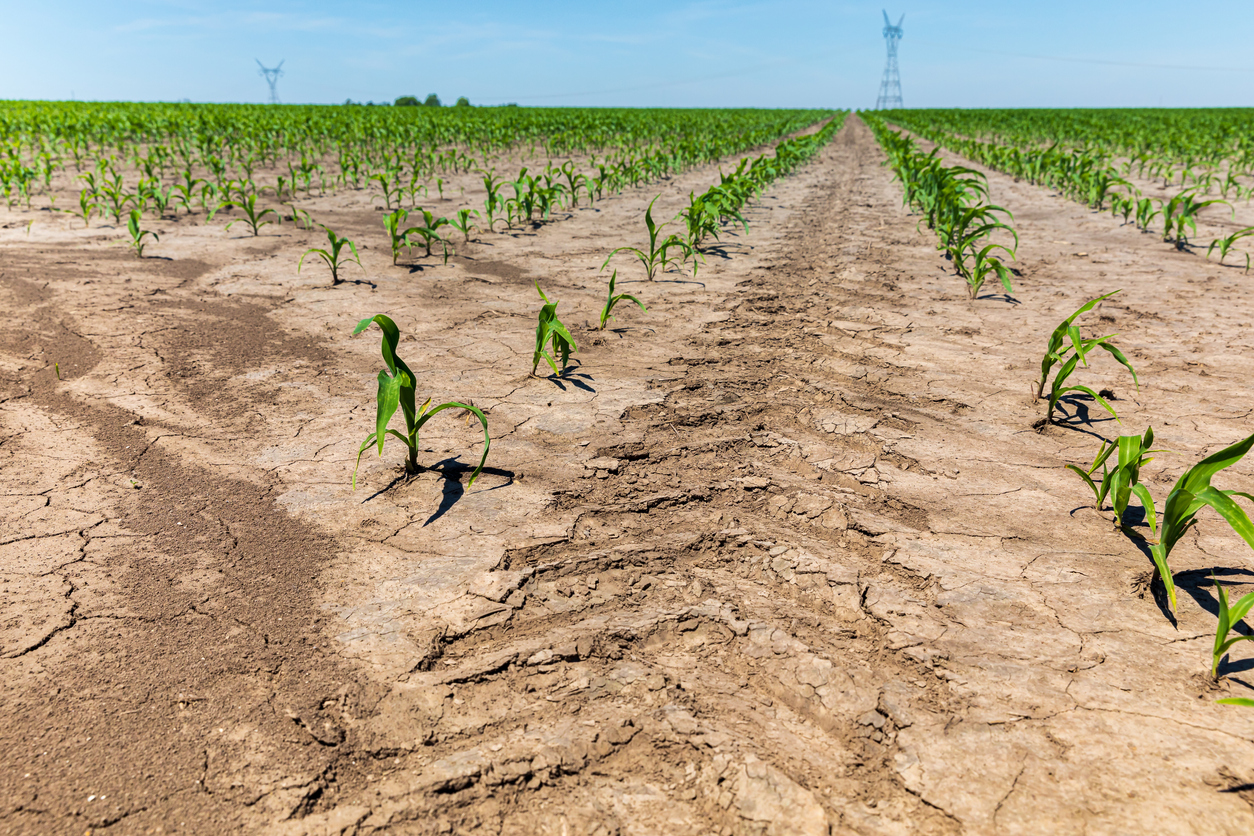Compaction or Poor Soil Structure
I have a long-standing feud with engineers about soil compaction. Engineers insist that soil compaction is caused by wheel traffic (true) but it also comes from excessive tillage, rain (think hard driving rains) and gravity (to a lesser degree). Soil compaction is poor soil structure due to a lack of roots and active carbon (soil organic matter, SOM) from root exudates. Tillage adds soil oxygen that promote bacteria that breaks down the good soil structure (macro-aggregates, macro’s) or soil that crumbles. The glues that form the macro’s comes from plant roots and microbial waste or byproducts. Bacteria wastes are important for cementing soil particles into micro-aggregates (micros) while fungi are important for producing glomalin that cement micro’s together into macro’s. Micro’s are the building blocks to good soil structure, but without the glues, they cause poor soil structure or compacted soils. A balance of soil bacteria and fungus are needed for good soil structure.
Tillage promote bacteria populations over fungal populations, reducing glomalin and root exudate production. These glues in the soil have two major functions, they promote good soil aggregation and they serve as a food source for the microbes. Tilled soils are high in oxygen and bacteria which consume these glues as a food source. Micro’s alone tend to set up like a brick wall. Farmer who excessively till their soil (get it too fine) often find that after a rain, the soil sets up like concrete because the soil becomes too dense. Macro’s promote water infiltration, good drainage, and good soil structure.
Here is a simple experiment that gardeners, farmers, and school children can perform. Take a shovel and dig 6-8 inches in a tilled garden or field. You will find a compacted area or hard pan within 6-8 inches. On vertically tilled soils, you may find two areas, one at 2-4 inches (vertical tillage) and one deeper (6-8 inches) from plowing 40-50 years ago. Soil compaction/poor soil structure can last a long time, reducing yields 30% or more each year. Find an undisturbed area at the edge of a road ditch, a wooded area, or the corner of a field. Compare the soil structure. Soils with good soil structure have a dark rich color, high in SOM (smells great), have large soft peds (micro’s glued together into macro’s) that crumble. In undisturbed soils, you should not find any hard pans.
There are two ways to deal with soil compaction or poor soil structure. Mechanical solutions are short-lived lasting one year and contribute to long-term soil compaction or poor soil structure. A ripper or subsoiler will increase water infiltration 18 inches but it burns up SOM and leaves the soil suspectable to soil erosion. The biological approach may be slower (takes 2-3 years, roots penetrate about 1 foot/year) but it is longer lasting, increasing SOM by becoming a major storehouse for soil nutrient, and reduces soil erosion. Cover crop roots may increase water infiltration down 3 feet or deeper to improve water drainage.
Limit or totally reduce tillage to improve soil structure. Avoid subsoiling wet soils which cause smearing and sidewall compaction. Second, plant cover crops yearly to maximize active SOM, root exudates, and glomalin that form macro’s. Plant a mixture of legumes, grasses and brassica cover crops. Grass roots (sorghum, annual ryegrass, cereal rye) are fibrous and supply carbon and phosphorus. Legume roots (clovers: Balansa, crimson, red; hairy vetch; winter peas; Sunn hemp) have a deeper tap roots and supply nitrogen to balance the C:N ratio. Brassica’s (daikon radish, kale, rape seed) reduce weeds and promote beneficial microbial populations. Sunflowers have deep roots while buckwheat have shallow roots (great for reducing surface compaction).
Third, keep the soil surface covered with crop residue. Surface crop residue reduces heavy rainfall impact and cushions the weight of wheel and implement traffic. Crop residue also reduces soil erosion, improves water infiltration, and regulates oxygen and soil carbon levels. Removing residue, is like removing the roof on your house. The house will soon rot out and collapse just like our soils tend to break down and collapse with excess tillage and a lack of live roots. I’ll grant the engineers 2 things: Heavy wheel axle loads AND tillage are major problems causing soil compaction, but it takes Biology and live roots to improve soil structure!
